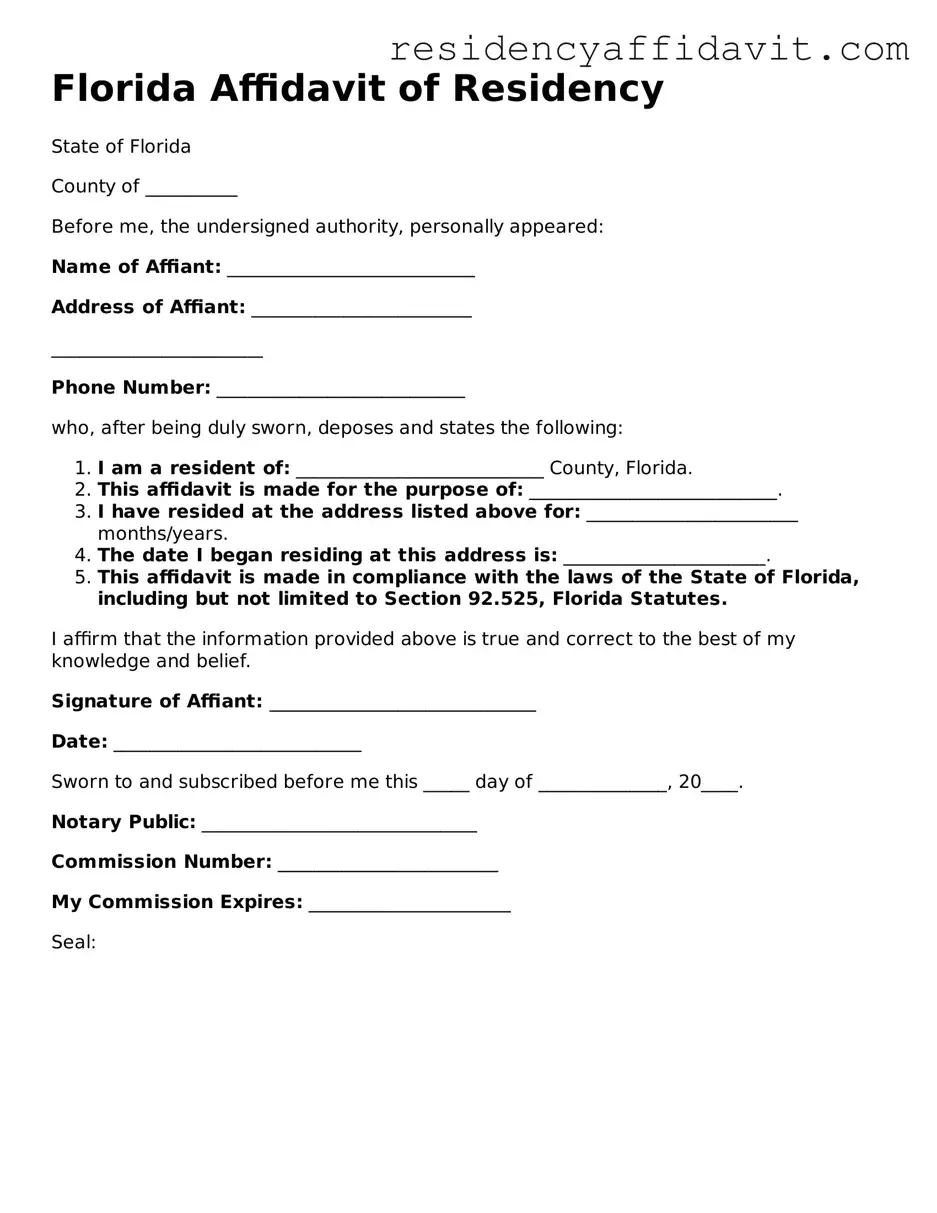Filling out the Florida Affidavit of Residency form can be straightforward, but several common mistakes can lead to delays or complications. One frequent error is failing to provide accurate personal information. It’s essential to ensure that your name, address, and other details are correct. Any discrepancies can raise questions and potentially invalidate the affidavit.
Another mistake involves not signing the form in the appropriate section. Many individuals overlook this crucial step, thinking that filling out the information is sufficient. Without a signature, the affidavit cannot be considered valid, which may lead to further complications.
Some people forget to date the affidavit. A missing date can create confusion about when the residency was established. Including the date is vital for establishing a timeline and ensuring that the affidavit meets the necessary legal requirements.
Additionally, individuals sometimes neglect to have the affidavit notarized. In Florida, notarization is typically required for the affidavit to be legally binding. Without a notary’s signature and seal, the document may not hold up in legal situations.
Another common mistake is providing incomplete information about the residency. Failing to include all relevant details, such as how long you have lived at the stated address, can lead to questions about your residency status. Providing comprehensive information helps to reinforce the validity of your claims.
Some people also misunderstand the purpose of the affidavit. It is not merely a formality; it serves as a legal declaration of residency. Misrepresenting your residency status can have serious legal consequences, so it’s important to be truthful and accurate.
Another issue arises when individuals do not keep a copy of the completed affidavit. Retaining a copy is essential for your records and may be necessary for future reference. Without it, proving your residency could become more complicated.
Moreover, people sometimes rush through the form without reading the instructions carefully. Each section has specific requirements, and overlooking these can lead to errors. Taking the time to read and understand the instructions can save you from making mistakes.
Lastly, failing to check for any updates or changes to the form can lead to using an outdated version. Always ensure you are using the most current form to avoid any issues with your submission. Staying informed about any changes can help streamline the process and ensure compliance with current regulations.
